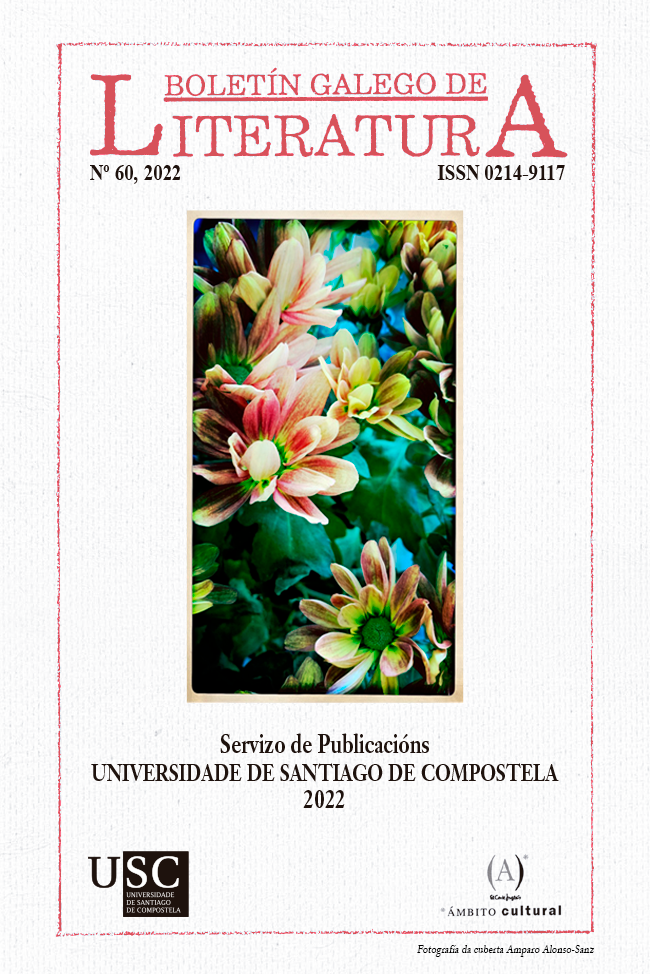The female subjugation of Alice's White Rabbit's wife in picture book format
Main Article Content
Abstract
The narrative with little Alice as the main character, created by Lewis Carroll at the end of the 19th century, continues to occupy a prominent place in the collective imagination of people of all age, both for its consolidation as a classic of Children and Young Adults Literature and for the multitude of literary and film rewritings it has given rise to. The aim of this article is to analyse, from a gender perspective, the free literary rewriting and ideological in use, the picture book entitled La esposa del Conejo Blanco, written and illustrated by Gilles Bachelet. The results show the clear intention of the work to denounce and criticise the instance of marriage as a mechanism of subjugation of women, without losing aesthetic and literary quality or originality. In the final conclusion, it is evident that the combination of text and image through different types of interaction and the use of sarcasm, hidden in the words of the protagonist, which gain a new meaning with the accompaniment of the illustration, reinforces the link of the work with the non-child audience, whose problems are exposed and denounced in the album.
Keywords:
Article Details
References
Bachelet, G. (2016). La esposa del Conejo Blanco. Adriana Hidalgo Editora.
Carabias Álvaro, M. (2001). El arte y la fotografía, refugios tolerados para la deformación social de la imagen femenina. Arte, Individuo y Sociedad, 13, 123-142. https://revistas.ucm.es/index.php/ARIS/article/view/ARIS0101110123A
Colomer, T. (2010). Introducción a la literatura infantil y juvenil actual. Síntesis.
Ferreira Boo, C. (2020). Conto marabilloso e reescritas na Literatura Infantil e Xuvenil Galega. Elos. Revista De Literatura Infantil E Xuvenil, 7, 97-119. https://doi.org/10.15304/elos.7.6850
Genette, G. (1989). Palimpsestos. La literatura en segundo grado. Taurus.
Gómez-López-Guiñones, L. (2015). Metaficción en los libros infantiles italianos del siglo XXI. Ocnos, 13, 99-115. https://doi.org/10.18239/ocnos_2015.13.06
Joosen, V. (2011). Critical & Creative perspectives on fairy tales: an intertextual dialogue between fairy-tale scholarship and postmodern retellings. Wayne State University Press.
Lozano Rubio, S. (2012). Las causas de la subyugación femenina: lecciones del feminismo marxista. Estrat Crític, 6, 213-227. https://ddd.uab.cat/record/107249?ln=ca
Nikolajeva, M. y Scott, C. (2001). How Picturebooks Work. Garland Publishing.
Ramos, Ana Margarida (2019). “Reilustrar Alice: Tentativas de Escapar à tentação da Disney”. Elos. Revista de Literatura Infantil e Xuvenil, 6, "Artigos", 37-52. ISSN 2386 -7620. DOI http://dx.doi.org/10.15304/elos.6.5723
Roig, B.-A. y Ferreira, C. (2010). O conto de transmisión oral na LIX galega. En B.-A. Roig, M. Neira e I. Soto (Coords.), Reescrituras do conto popular (2000-2009) (pp. 83-105). Edicións Xerais de Galicia.
Scolari, C. A. (2013). Narrativas transmedia. Deusto.
Smith, A. (2014) Letting Down Rapunzel: feminism's effects of fairy tales.
Children's Literature in Education, 46(4), 424-437. https://doi.org/10.1007/s10583-014-9239-6
Valriu, C. (2010). Reescriptures de les rondalles en el s. XXI (2000-2009). En B.-A. Roig, M. Neira e I. Soto (Coords.), Reescrituras do conto popular (2000-2009) (pp. 13-30). Edicións Xerais de Galicia.
Vouillamoz, N. (2022). Reescrituras subversivas y literatura infantil. Cuando el libro-álbum da voz a personajes de cuentos clásicos. Ocnos, 21(1), 1-16. https://doi.org/10.18239/ocnos_2022.21.1.2737
Most read articles by the same author(s)
- Rocío García-Pedreira, The book art for children: an approach for teachers , Boletín Galego de Literatura: No 61 (2023)
- Rocío García-Pedreira, Confronting foreign cultural invasion through a card game: the case of "Alakazum!" , Boletín Galego de Literatura: No 61 (2023)







